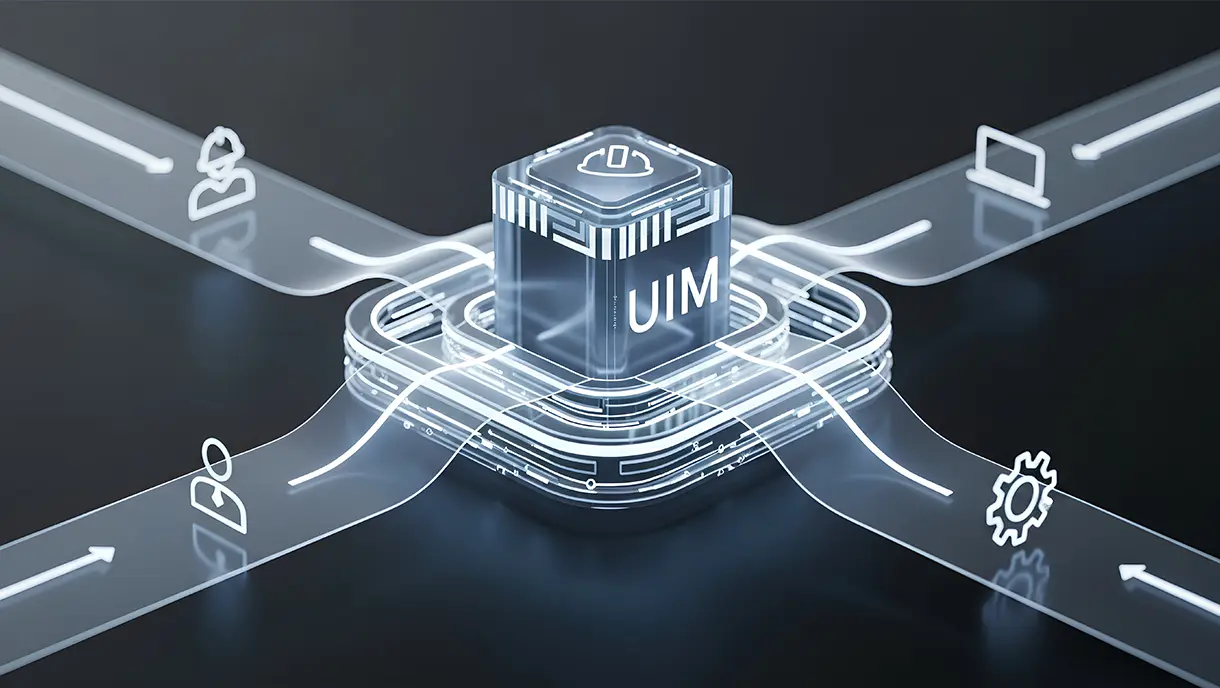Passwordless Authentication: Beyond Passwords
This blog explores the shift from traditional password-based authentication to passwordless methods that use biometrics, hardware tokens, and advanced cryptographic techniques. Learn about the main types of passwordless authentication, their advantages over passwords, and how these solutions enhance both security and user experience. The article also details the practical benefits for organizations, such as reduced support costs, improved compliance, and future-proof protection against evolving security threats

In today’s digital age, security and user experience are paramount concerns for individuals and organizations. Traditional password-based authentication systems have long been the standard but come with inherent vulnerabilities and user frustrations.
However, a new wave of passwordless authentication methods is emerging as a promising alternative. In this blog, we will delve into the world of passwordless authentication and explore methods, benefits, and implications. Also, discover how it goes beyond the limitations of traditional passwords.
Passwordless authentication is the holy grail of cybersecurity. It’s the easiest, most secure way to protect your accounts. – Jack Dorsey, former CEO of Twitter.
What is Passwordless Authentication: Redefining Security?
Passwords have long been a weak link in the passwordless security chain. They are susceptible to breaches, password reuse, and social engineering attacks. Passwordless authentication addresses these vulnerabilities by eliminating the reliance on traditional passwords. Instead, it leverages other factors, such as biometrics, tokens, or unique identifiers, to verify user identities.
Passwordless authentication is a method of verifying a user’s identity without relying on traditional passwords. Instead of entering a password, users authenticate themselves using alternative factors such as biometrics (fingerprint, facial recognition, iris scan), possession of a physical device (security key, smartphone), or cryptographic tokens.
Explore Passwordless Authentication Methods
“The future of security is not about walls, but about keys.” – John Chambers, former CEO of Cisco
Passwordless authentication methods have emerged as a modern and secure alternative to traditional password-based authentication. These methods aim to enhance user experience while bolstering security measures. Let’s explore the different types of passwordless authentication methods and how they work:
Biometric Authentication
Biometric authentication relies on unique physical or behavioral characteristics of individuals for identity verification. It includes features such as fingerprints, facial recognition, iris scanning, voice recognition, or even behavioral patterns like keystroke dynamics. Biometric authentication methods provide high security and convenience since these characteristics are difficult to forge or replicate.
Hardware-Based Authentication
Hardware-based authentication involves using physical devices, such as security keys or smart cards, to authenticate users. These devices store cryptographic keys and generate one-time passwords, ensuring secure access to accounts or systems.
Users typically insert the hardware key into a USB port or use Near Field Communication (NFC) to establish their identity. Hardware-based authentication offers robust security, as the authentication factor is tied to a physical device that an attacker would need to possess.
Token-Based Authentication
Token-based authentication utilizes temporary tokens, often delivered through mobile push notifications or SMS, to verify user identity. When logging in, users receive a token on their registered mobile device and enter it into the authentication system.
Alternatively, time-based one-time passwords (TOTP) can be generated by authenticator apps, providing a secure second factor for authentication. Token-based authentication adds a layer of security, as the token is time-sensitive and cannot be reused.
Public Key Infrastructure (PKI)
Public Key Infrastructure is a cryptographic system that relies on public and private key pairs. With PKI-based authentication, users possess a private key stored securely on their devices, while the corresponding public key is registered with the authentication system.
When accessing a service, the user’s device generates a digital signature using their private key, and the authentication system verifies it using the public key. As a result, PKI provides strong security and can be used in conjunction with other authentication methods for enhanced protection.
Mobile Device Authentication
Mobile device authentication leverages the unique characteristics and capabilities of mobile devices to authenticate users. This method utilizes device-specific information such as device IDs, SIM card details, or trusted device certificates. By verifying these mobile-specific factors, organizations can authenticate users and grant access to services securely.
It’s important to note that these passwordless authentication methods can be used individually or in combination, depending on the security requirements and user preferences. Organizations often implement multi-factor authentication (MFA) by combining two or more passwordless authentication methods to provide layered security.
Check out the following table comparing different authentication methods:
Common ground:
- All methods aim to verify the identity of the user before granting access.
- All can be used in conjunction with other methods for multi-factor authentication.
- All have their own advantages and disadvantages, the best choice depends on specific needs and context.
Benefits of Passwordless Authentication
Passwordless authentication offers a range of benefits for both users and organizations.
- Enhanced security: It eliminates the vulnerabilities associated with passwords, such as password reuse, brute-force attacks, and phishing. It provides a more robust defence against unauthorized access. A 2023 study by Microsoft found that 92% of users prefer passwordless authentication methods when available.
- Improved user experience: It offers a seamless and user-friendly experience. Users no longer need to remember complex passwords, leading to reduced frustration, password fatigue, and the risk of forgotten passwords.
- Streamlined login process: Users can log in quickly and effortlessly using biometrics (fingerprint, facial recognition) or token-based methods. This saves time and simplifies the authentication process.
- Reduced support costs: Password-related issues, such as forgotten passwords or account lockouts, can result in significant support costs for organizations. Passwordless authentication reduces these support needs, freeing up resources for other tasks.
- Increased productivity: It eliminates the need to remember and manage passwords. Users can focus on their tasks without interruptions caused by password-related issues.
- Stronger compliance and regulatory adherence: Its methods align with various compliance requirements and industry regulations. They provide a more robust authentication framework, helping organizations meet passwordless security standards.
- Scalability and flexibility: Passwordless authentication solutions can be easily scaled to accommodate a growing user base or changing organizational needs. They can adapt to different environments and integrate with existing systems seamlessly.
- Reduced risk of credential theft: Since passwordless authentication does not rely on passwords, the risk of credential theft through phishing or keylogging is significantly reduced. Unauthorized individuals cannot gain access by stealing passwords.
- Enhanced trust and user confidence: It instils a sense of trust and confidence in users. They feel more secure knowing their accounts are protected by advanced authentication methods rather than vulnerable passwords.
- Future-proof authentication: As technology evolves, passwordless authentication is well-positioned to adapt and incorporate new advancements. It provides a future-proof authentication solution to keep up with emerging security challenges.
Conclusion
As the need for more robust security and seamless user experiences continues to grow, passwordless authentication methods are gaining momentum.
The digital future is passwordless, and the sooner we embrace it, the better. – Sundar Pichai, CEO of Google
By going beyond traditional passwords, these methods offer enhanced passwordless security, streamlined user experiences, and reduced administrative burdens. OLOID’s Passwordless Authenticator seamlessly blends physical and cyber identities for frontline workers, employing multiple factors to offer simple and secure authentication methods.
Learn more about OLOID's MFA solution!
FAQs
1. How does passwordless authentication work?
Passwordless authentication verifies users without passwords, using factors like biometrics (fingerprint, facial recognition), tokens, or unique identifiers. This eliminates password vulnerabilities and enhances security.
2. Is passwordless authentication more secure than passwords?
Yes, passwordless authentication is significantly more secure than traditional passwords. It eliminates the risk of password breaches, reuse, and phishing attacks, providing stronger protection against unauthorized access.
3. What are the different types of passwordless authentication?
Common types include:
- Biometric authentication (fingerprint, facial recognition, iris scan)
- Hardware-based authentication (security keys, smart cards)
- Token-based authentication (mobile push notifications, SMS, authenticator apps)
- Public Key Infrastructure (PKI)
- Mobile device authentication (device IDs, SIM card details, trusted certificates)
4. What are the benefits of using passwordless authentication?
Benefits include:
- Enhanced security
- Improved user experience
- Streamlined login process
- Reduced support costs
- Increased productivity
- Stronger compliance and regulatory adherence
- Scalability and flexibility
- Reduced risk of credential theft
5. How can I implement passwordless authentication?
Options include:
- Using built-in features in operating systems or applications
- Implementing third-party authentication solutions
- Integrating with identity management providers
- Consulting with cybersecurity experts for guidance
[[pdf-cta]]






Get the latest updates! Subscribe now!




